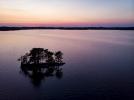You are using an out of date browser. It may not display this or other websites correctly.
You should upgrade or use an alternative browser.
You should upgrade or use an alternative browser.
Flying at night
- Thread starter tca
- Start date
Interficiam Stercore
Well-Known Member
Video at night is always tough to take. If I change to manual mode, I switch the ISO until the video on the monitor shows that there is a decent amount of light, with as little grain as possible. It sorta of depends on what your ok with. I ussually use 1600 iso and leave evrything else on auto.
Try this, drive to a lit parking lot and fly up a hundred feet or so and just hover. Switch your camera's modes to manual one by one. Then try different combinations of adjustments. Write down what you did for each video. Then you can take your SD card home and see what kind of results you got with the setting s you made.
Others will have more to say, i'm sure.
Try this, drive to a lit parking lot and fly up a hundred feet or so and just hover. Switch your camera's modes to manual one by one. Then try different combinations of adjustments. Write down what you did for each video. Then you can take your SD card home and see what kind of results you got with the setting s you made.
Others will have more to say, i'm sure.
In your case with a Mavic 2 Pro you have 3 exposure parameters to modify.
1. ISO - Higher value amplifies the noise in the vid or picture but require less light to expose correctly
2. Shutter speed - Too long & you risk to get motion blur due to craft movements, try not to go longer than 2sec (stills).
3. Aperture - A more open aperture (smaller value) will let in more light per time unit. Smaller value makes for a shorter shutter ... or a possibility to instead chose a lower ISO value.
So in real life low light conditions and with the M2P you set the aperture to the smallest possible value, then try to fight motion blur with a not too long shutter speed, usually 2sec is the longest where you have a possibility to get a couple sharp ones out of several tries. If the image still is under exposed the only parameter that you have left is the ISO, ramp that up until you're satisfied with the exposure & can live with the increased noise level.
When you think you have a set exposure ... snap away several pictures & hope a couple come out reasonably sharp. Also be prepared to give the best shots some enhancements in post when you come home ... you can reduce the noise, light up darker parts in the pic or the opposite, make too bright spots darker. Then sharp the pic up a bit.
For videoing it's mainly the same exposure parameters but here you cant go slower with the shutter than the frame rate, that's why filming in the dark will be more difficult. With for instance 25fps the shutter can't be slower than 1/25sec ... which is very much quicker than those max. 2sec I recommend for stills, meaning that you need to crank up the ISO value quite a bit in order to get even close to a proper exposure.
It's possible to be lucky & get a sharp photo during night conditions but a lot of editing is usually needed to get them to be usable.
Here a couple examples from my Mavic Air 1 (which have a far inferior camera than the M2P)
Night:


1-2 hours after the sunset:



1. ISO - Higher value amplifies the noise in the vid or picture but require less light to expose correctly
2. Shutter speed - Too long & you risk to get motion blur due to craft movements, try not to go longer than 2sec (stills).
3. Aperture - A more open aperture (smaller value) will let in more light per time unit. Smaller value makes for a shorter shutter ... or a possibility to instead chose a lower ISO value.
So in real life low light conditions and with the M2P you set the aperture to the smallest possible value, then try to fight motion blur with a not too long shutter speed, usually 2sec is the longest where you have a possibility to get a couple sharp ones out of several tries. If the image still is under exposed the only parameter that you have left is the ISO, ramp that up until you're satisfied with the exposure & can live with the increased noise level.
When you think you have a set exposure ... snap away several pictures & hope a couple come out reasonably sharp. Also be prepared to give the best shots some enhancements in post when you come home ... you can reduce the noise, light up darker parts in the pic or the opposite, make too bright spots darker. Then sharp the pic up a bit.
For videoing it's mainly the same exposure parameters but here you cant go slower with the shutter than the frame rate, that's why filming in the dark will be more difficult. With for instance 25fps the shutter can't be slower than 1/25sec ... which is very much quicker than those max. 2sec I recommend for stills, meaning that you need to crank up the ISO value quite a bit in order to get even close to a proper exposure.
It's possible to be lucky & get a sharp photo during night conditions but a lot of editing is usually needed to get them to be usable.
Here a couple examples from my Mavic Air 1 (which have a far inferior camera than the M2P)
Night:


1-2 hours after the sunset:



Rabber
Well-Known Member
I did something similar. I set the drone off to fly, changing different exposures and using my iPhones voice memos to record the different settings.Video at night is always tough to take. If I change to manual mode, I switch the ISO until the video on the monitor shows that there is a decent amount of light, with as little grain as possible. It sorta of depends on what your ok with. I ussually use 1600 iso and leave evrything else on auto.
Try this, drive to a lit parking lot and fly up a hundred feet or so and just hover. Switch your camera's modes to manual one by one. Then try different combinations of adjustments. Write down what you did for each video. Then you can take your SD card home and see what kind of results you got with the setting s you made.
Others will have more to say, i'm sure.
Rabber
Well-Known Member
What software do you use?In your case with a Mavic 2 Pro you have 3 exposure parameters to modify.
1. ISO - Higher value amplifies the noise in the vid or picture but require less light to expose correctly
2. Shutter speed - Too long & you risk to get motion blur due to craft movements, try not to go longer than 2sec (stills).
3. Aperture - A more open aperture (smaller value) will let in more light per time unit. Smaller value makes for a shorter shutter ... or a possibility to instead chose a lower ISO value.
So in real life low light conditions and with the M2P you set the aperture to the smallest possible value, then try to fight motion blur with a not too long shutter speed, usually 2sec is the longest where you have a possibility to get a couple sharp ones out of several tries. If the image still is under exposed the only parameter that you have left is the ISO, ramp that up until you're satisfied with the exposure & can live with the increased noise level.
When you think you have a set exposure ... snap away several pictures & hope a couple come out reasonably sharp. Also be prepared to give the best shots some enhancements in post when you come home ... you can reduce the noise, light up darker parts in the pic or the opposite, make too bright spots darker. Then sharp the pic up a bit.
For videoing it's mainly the same exposure parameters but here you cant go slower with the shutter than the frame rate, that's why filming in the dark will be more difficult. With for instance 25fps the shutter can't be slower than 1/25sec ... which is very much quicker than those max. 2sec I recommend for stills, meaning that you need to crank up the ISO value quite a bit in order to get even close to a proper exposure.
It's possible to be lucky & get a sharp photo during night conditions but a lot of editing is usually needed to get them to be usable.
Here a couple examples from my Mavic Air 1 (which have a far inferior camera than the M2P)
Night:
View attachment 134591
View attachment 134592
1-2 hours after the sunset:
View attachment 134593
View attachment 134594
View attachment 134595
Rondal
Well-Known Member
- Joined
- Jan 21, 2017
- Messages
- 106
- Reactions
- 99
- Age
- 92
Shutter at 2 seconds, iso at 400(i think, or 800) auto focus.
Just practice a bit and it will come to you.
View attachment 134619
Rabber
Well-Known Member
The problem with adobe for me is the subscription format.Adobe Lightroom
Darkabaz
Well-Known Member
Amazing shots with an Mavic air 1 , dude!In your case with a Mavic 2 Pro you have 3 exposure parameters to modify.
1. ISO - Higher value amplifies the noise in the vid or picture but require less light to expose correctly
2. Shutter speed - Too long & you risk to get motion blur due to craft movements, try not to go longer than 2sec (stills).
3. Aperture - A more open aperture (smaller value) will let in more light per time unit. Smaller value makes for a shorter shutter ... or a possibility to instead chose a lower ISO value.
So in real life low light conditions and with the M2P you set the aperture to the smallest possible value, then try to fight motion blur with a not too long shutter speed, usually 2sec is the longest where you have a possibility to get a couple sharp ones out of several tries. If the image still is under exposed the only parameter that you have left is the ISO, ramp that up until you're satisfied with the exposure & can live with the increased noise level.
When you think you have a set exposure ... snap away several pictures & hope a couple come out reasonably sharp. Also be prepared to give the best shots some enhancements in post when you come home ... you can reduce the noise, light up darker parts in the pic or the opposite, make too bright spots darker. Then sharp the pic up a bit.
For videoing it's mainly the same exposure parameters but here you cant go slower with the shutter than the frame rate, that's why filming in the dark will be more difficult. With for instance 25fps the shutter can't be slower than 1/25sec ... which is very much quicker than those max. 2sec I recommend for stills, meaning that you need to crank up the ISO value quite a bit in order to get even close to a proper exposure.
It's possible to be lucky & get a sharp photo during night conditions but a lot of editing is usually needed to get them to be usable.
Here a couple examples from my Mavic Air 1 (which have a far inferior camera than the M2P)
Night:
View attachment 134591
View attachment 134592
1-2 hours after the sunset:
View attachment 134593
View attachment 134594
View attachment 134595
Aurora HDR apps are one-time purchases or a free trial... Not LR, but an option.The problem with adobe for me is the subscription format.
Similar threads
- Replies
- 5
- Views
- 646
- Replies
- 7
- Views
- 576
- Replies
- 12
- Views
- 493
DJI Drone Deals
New Threads
-
-
-
-
Skunk Works and XTEND Partner for Advanced Mission Execution.
- Started by The Droning Company
- Replies: 0
-
Decatur man pleads guilty to illegally operating drone over Truist Park during MLB All-Star Game
- Started by mavic3usa
- Replies: 1










